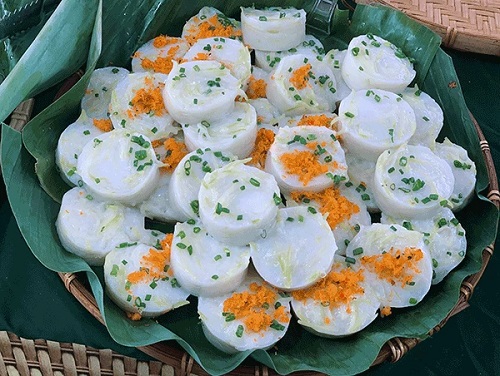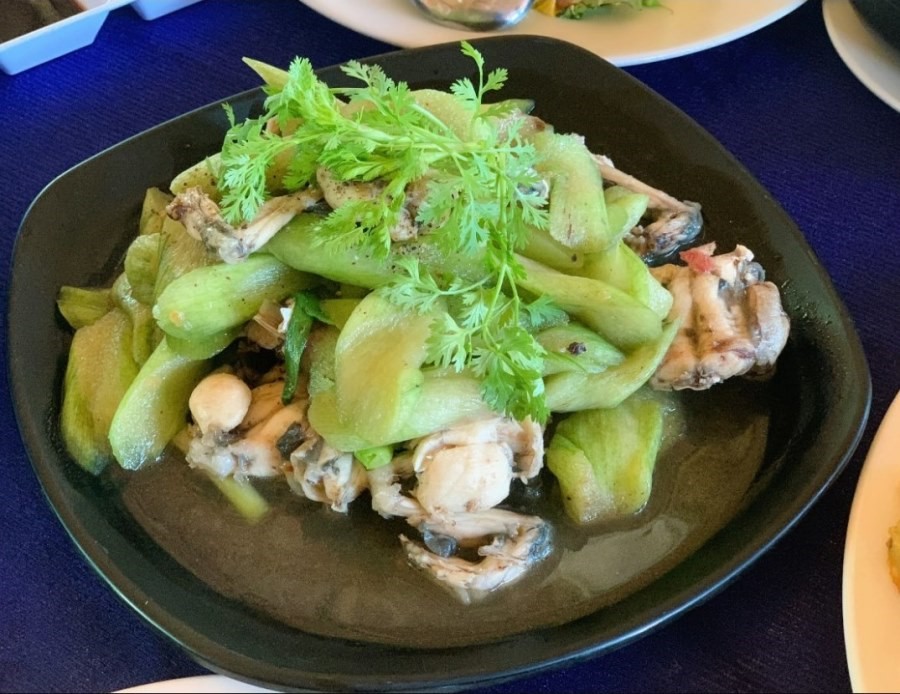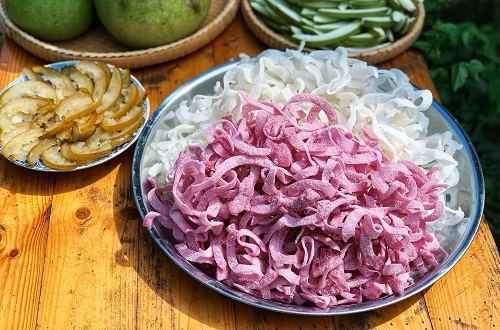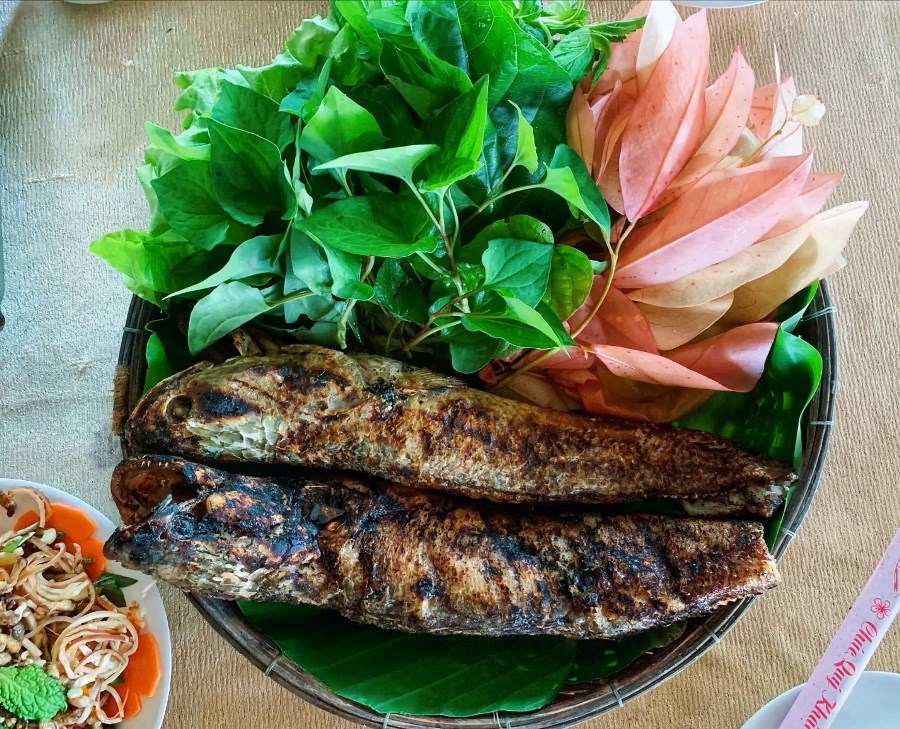
In the past, there were countless shrimps and fish in the Mekong Delta; yet, in order to catch them, it is necessary to have effective fishing tools. In addition to the farming tools brought from their hometown, those who first settled here made new tools and thought of new ways to catch abundant aquatic species in the immense river environment at that time. Each fishing tool with a different fishing style depends on natural conditions as well as types of shrimp and fish.
Đáy (a kind of bottom fishing): In order to catch a lot of fish and shrimp in big rivers and canals with semi-diurnal tide regime (i.e. 2 high tides and low tides every day), people use Đáy. This is a large net bag with a slightly square opening, usually about 6 meters long and about 3 meters wide. It is about 20 meters long, big at the opening and gets smaller toward the bottom. The bottom end is tied up. It is "installed", "spread" at the high tide as the water stops flowing. Later, when the low tide starts, and the water flows more and more strongly, fish and shrimp follow the tiding water to avoid running aground instinctively after entering the fields and ditches ... for food. This fishing tool is mainly used to catch small shrimps and small white fish in the freshwater area; or small carps in the watershed; or mudskippers, tiger shrimps in brackish water...
Đăng (weir): This is a fairly simple fishing gear. It is a net of about 100 meters long, 2 meters high stretched along the riverbanks during high tides. When the tide is low, shrimp and fish from the ditches in the garden and fields following the flow of water get caught in the weir. This method is used on low tide days when there is very little water in rivers and canals ... It can catch a lot of fish such as snakehead, catfish, silver carp, perch, ….
Nò (bamboo fishing trap): This tool is a round cylinder, made of bamboo, about 2 meters long. In the past, to make a rim, people often searched for dây cổ rùa a species of liana to bend the rim. This liana grows on bamboo trees, crape myrtles, poon trees, and other bushes. It has a perimeter of the big toe and is tough and flexible. So, it is easy to bend as required. In case there is no liana, people cut off bamboo trees, dry, split whittle them in round shapes to bend the rim. The body of the tool is covered with whittled bamboo sticks, tightly woven with a string. Hom (one-way entry) is along the body, placed at the mouth. It is made of flat, thin, sharp-pointed bamboo needles so fish cannot swim backward out of the trap. To put this tool in the river, people have to braid it in a V-shaped tail that opens to the mouth; then they put it into that position. It is placed in strong currents, such as the mouth of a ditch to a canal, or a riverbank in front of the house. Nò is mainly used to catch shrimp, loach, perch, catfish, snakehead, crabs, snails ...
Chài (casting or throwing net): This is a traditional fishing tool dating back very long in the past. This very popular tool is used throughout our country. This net is woven either sparsely or thickly depending on the fishing purpose. Its shape is like a conical hat. The top has a soft wire for holding and pulling up. The bottom has a lead border. When casting the net, it spreads out and fell into the water. Then the heavy lead quickly closes the net. People pull up the net and remove fish from the net. Tossing and casting a fishing net is also a technique that requires a lot of practice and skill.

A sampan with bamboo fish traps. Photo: DUY KHOI
Lọp (Bamboo fish trap): This is another popular fishing tool in the Mekong Delta region, dating back to the ancient times due to its ease to make and to use. Placing the traps is common among locals in both rainy and dry seasons. The traps are usually made of bamboo, and it is a quite simple but effective fishing method. There are different types of traps like traps for catching fish, crabs, shrimp, even snakes, mice ... It is usually cylindrical with two cuttings for fish and shrimps to get into. People have created different types of traps depending on what they want to catch although all of the traps may look similar and work in the same principle: to entice preys.
Vó: (lift net) is a square net with a loosen bottom in the middle, hooked, tied, hung on a cross-shaped hanger. It is usually made of bamboo due to its elasticity. The center of the hanger is tied tightly to a long, flexible bamboo connected to a lever like a bar. People let the net submerge under the water, tie bags of bait with roasted bran, or intestine of chickens and ducks to lure fish, shrimp and shrimp into the net. After a certain period of time, people lift it up. Fish and shrimp will be trapped in the net. It is often used to catch small carps, shrimps, crabs ... There are also "small" ones for young children to use to catch small shrimps and fish in garden ditches…
In addition to the above typical traditional fishing tools, others used in the Mekong Delta include fishing traps like bôn, xệp, nôm or fishing nets like lưới bén, or fishing poles like câu rê, câu cắm, câu chìm ...
Human strong survival and adaptation instincts have helped the locals to live well in this new southern land. Fishing is a common activity throughout the process of land reclamation, which has been an important production practice in the life of the Southern inhabitants since ancient times.

Bac Lieu farmers pulling shrimp nets in the rearing pond. Photo: DUY KHOI
Source: Can Tho Newspaper - Translated by Diep Truong












